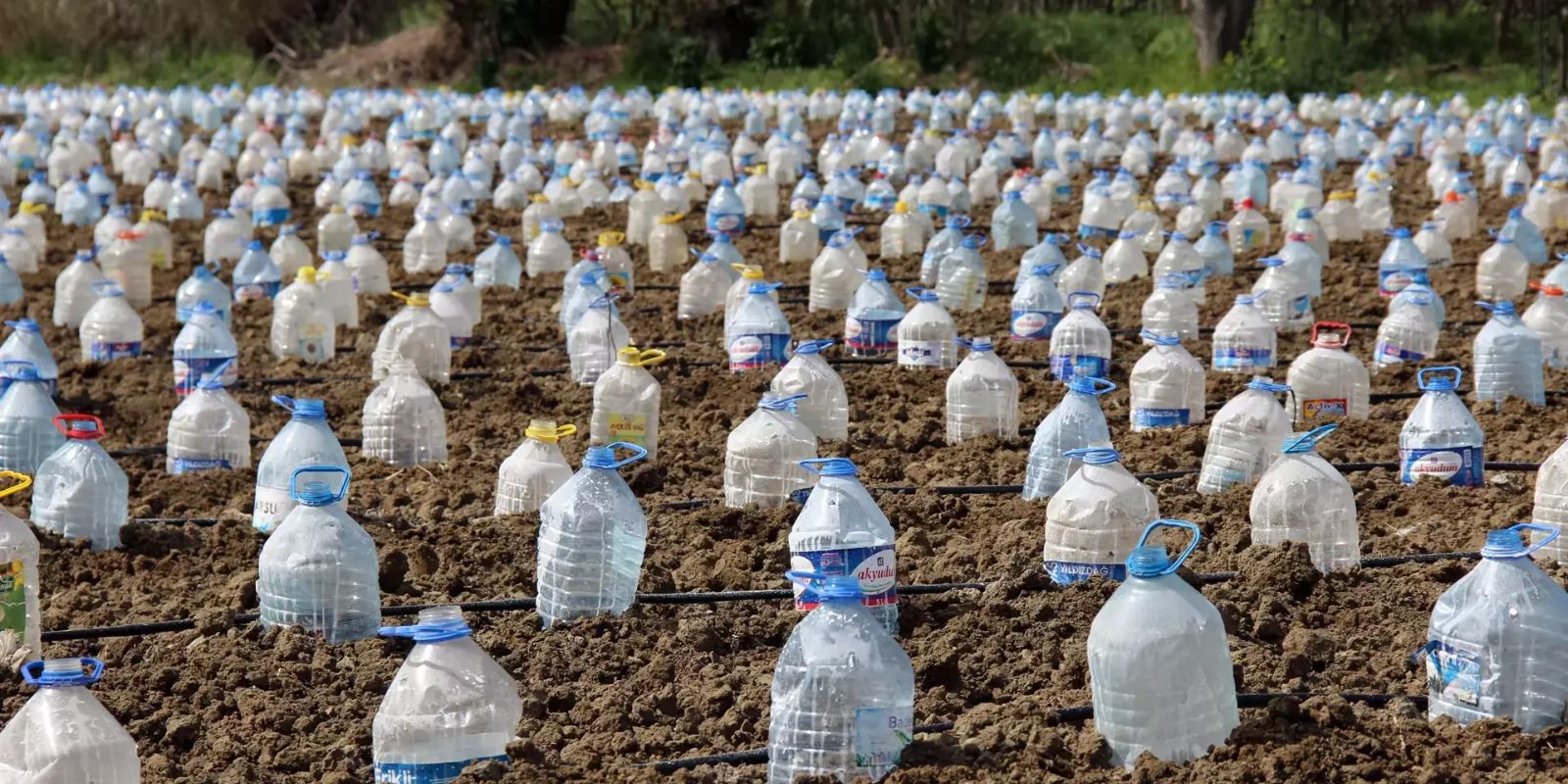Sustainability has become a growing concern in agriculture, prompting farmers worldwide to adopt innovative techniques to reduce waste and promote eco-friendly practices. Thai farmers have pioneered one such method: using plastic bottles to protect their crops. This approach not only repurposes waste but also ensures that plants grow healthier in controlled conditions. Let’s dive into this fascinating method, its benefits, and how you can replicate it in your garden.
Why Plastic Bottles?
Plastic bottles are abundant, durable, and versatile. Instead of adding to the global waste problem, Thai farmers creatively repurpose them to:
- Shield young plants from pests.
- Protect crops from heavy rain and strong winds.
- Create a microclimate to support plant growth.
- Reduce water loss and maintain soil moisture.
This simple yet effective method addresses multiple challenges faced by small-scale farmers and gardeners, making it a game-changer in sustainable agriculture.
The Step-by-Step Process
1. Collect and Clean Plastic Bottles
Farmers begin by collecting used plastic bottles, usually from local households or waste centers.
- Rinse the bottles thoroughly to remove any residues that could harm plants.
- Remove labels and caps to allow for ventilation or sunlight penetration.
2. Modify the Bottles
The plastic bottles are then cut and shaped based on their intended use.
- For Seedlings: Cut the bottom off the bottle to create a protective dome.
- For Mature Plants: Make vertical slits for ventilation or to fit around larger plants.
- For Drip Irrigation: Puncture small holes in the cap or bottom to create a slow-release watering system.
3. Position Over Plants
The prepared bottles are placed over seedlings or small plants to shield them from environmental stressors.
- For direct soil planting, bury the bottle slightly into the soil to keep it secure.
- For container gardening, simply place the bottle over the plant and weigh it down with small stones.
4. Monitor and Adjust
As the plants grow, farmers adjust the bottles to accommodate their size.
- Remove the bottle once the plant is strong enough to withstand environmental challenges.
- Reuse the bottles for the next planting cycle, reducing waste even further.
Benefits of Using Plastic Bottles in Agriculture
1. Pest Control
Plastic bottles act as physical barriers, preventing insects, snails, and other pests from reaching young plants. This reduces the need for chemical pesticides, promoting organic farming practices.
2. Protection from Harsh Weather
Thailand’s tropical climate brings heavy rains and strong winds, which can damage fragile crops. Plastic bottles shield plants, ensuring their survival during extreme weather conditions.
3. Water Conservation
Using bottles for drip irrigation minimizes water wastage. The slow release of water ensures that plants receive adequate moisture without overwatering.
4. Cost-Effective
Repurposing waste materials like plastic bottles is a budget-friendly solution for farmers and gardeners alike. It eliminates the need to purchase expensive protective structures or irrigation systems.
5. Promoting Recycling
This method highlights the importance of recycling and upcycling, inspiring others to find creative ways to reuse materials that would otherwise end up in landfills.
Creative Variations of the Method
Thai farmers have adapted the plastic bottle technique for different crops and situations:
- Mini Greenhouses: Large plastic bottles, such as those used for water coolers, are turned into mini greenhouses for delicate plants.
- Plant Labels: Bottle scraps are cut into strips and used as plant markers.
- Vertical Gardening: Bottles are stacked or hung to create space-efficient vertical gardens, perfect for small spaces.
- Hydroponic Systems: Bottles are modified to hold water and nutrients, enabling low-cost hydroponic gardening.
How You Can Implement This in Your Garden
Whether you’re a backyard gardener or an urban farmer, using plastic bottles to protect your plants is an accessible and impactful strategy.
Materials You’ll Need:
- Clean plastic bottles (various sizes).
- Scissors or a craft knife.
- Marker for labeling (optional).
- Soil, seeds, or seedlings.
Steps:
- Plan Your Layout: Identify which plants need protection or water conservation.
- Prepare Bottles: Cut and shape bottles according to the method best suited for your plants.
- Set Up: Position the bottles over or around the plants as needed.
- Monitor Growth: Adjust the bottles as the plants grow to ensure they remain beneficial.
Challenges and Solutions
While this method is highly effective, it’s not without challenges:
- Excessive Heat: Plastic bottles can trap too much heat in direct sunlight. Use bottles with ventilation holes or remove them during peak heat hours.
- Waste Management: Ensure bottles are reused multiple times and recycled properly once they’re no longer usable.
- Durability: Thin plastic bottles may degrade quickly. Opt for sturdier bottles or reinforce them with additional materials.
Inspiring Sustainable Practices Worldwide
Thai farmers’ innovative use of plastic bottles is a testament to the power of creativity and resourcefulness. This practice not only addresses agricultural challenges but also promotes environmental stewardship by reducing plastic waste.
As gardeners and plant enthusiasts, we can draw inspiration from these methods to make our gardens more sustainable. Small changes like this can have a significant impact on our planet’s health.
Conclusion
Using plastic bottles to protect crops is a simple, sustainable, and cost-effective solution that anyone can adopt. This ingenious technique not only benefits plants but also contributes to reducing plastic waste and conserving resources.
Motivation:
Ready to make your garden more sustainable? Try this eco-friendly method today and share your experience with us! Let’s work together to grow greener gardens and a healthier planet. 🌎💚
#SustainableFarming #PlasticReuse #GardeningHacks #EcoFriendlyGardening #GreenInnovation #PlantProtection #GardeningTips

